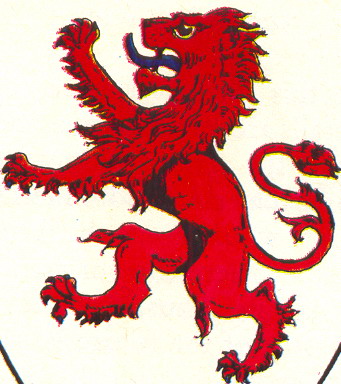Brit-Am Ephraimite Forum
Brit-Am Ephraimite Discussion. News and Issues concerning the Lost Ten Tribes and Judah in the World Today.
The Latest Issues

Present Issues
Ephraimite Forum-32
For Previous issues see:
Ephraimite Forum Archives
Ephraimite
Forum
The Most Recent Issues


Ephraimite Forum-32
Date: 26/December/07 17 Tebet 5768
Contents:
1.Captain Ian McRae: "a hard book to find a copy of"
2.Archaeology: Gallic Treasure Trove from Ancient Brittany (France)
3. The Death of Muhammed al-Dura was a Hoax!
1.Captain Ian
McRae: "a hard book to find a copy of"
Re: Ephraimite Forum-31
#1. Dr. Matthias Kuentzel: A Nazi-Islamic Continuum
Hello Yair,
That was a fascinating article on Matthias Kuentzel's book, 'Jihad and
Jew-Hatred' .
It is a hard book to find a copy of to read. Here in the UK I can only find
one supplier, Amazon.co.uk. Have a look here:
http://www.amazon.co.uk/gp/search?search-alias=stripbooks&field-keywords=&author=&select-author=field-author-like&title=Jihad+and+Jew-Hatred&select-title=field-title&subject=&select-subject=field-subject&field-publisher=&field-isbn=&chooser-sort=rank%21%2Bsalesrank&node=&field-binding=&mysubmitbutton1.x=0&mysubmitbutton1.y=0
Note the price ! ?84.10 !!!!!! That's over $170 !!!!
Amazon.com in the USA doesn't even list it.
Looks like someone doesn't want us to read the book.
Shalom,
Ian McRae
"Political correctness is the largest single danger to British culture, and
should be actively opposed wherever it is seen. Join the Campaign Against
Political Correctness now at
http://www.capc.co.uk "
2.Archaeology:
Gallic Treasure Trove from Ancient Brittany (France)
Record-breaking haul from Gaul discovered at farm in Brittany
http://www.archaeologynews.org/link.asp?ID=249976&Title=Record-breaking%20haul%20from%20Gaul%20discovered%20at%20farm%20in%20Brittany
By John Lichfield in Paris
Published: 20 December 2007
Asterix and Obelix, had they existed, might have paid for their mead and other
magic potions with gold-silver-copper coins stamped with elaborate images of men
and horses.
The largest treasure trove of pre-Roman, Gaulish money ever to be found has been
discovered in central Brittany.
The 545 coins ? each worth thousands of euros to collectors but priceless to
historians and archaeologists ? could overturn much of the received wisdom about
the complexity, and wealth, of pre-Roman Celtic society in France. Why was such
enormous wealth, a king's ransom at the time, buried in the grounds of a large
Gaulish farm 40 miles south of Saint-Brieuc in the first century BC? Why was the
hoard never recovered?
"Treasure on this scale would only have been used for transactions between
aristocratic families," said Yves Menez, an archaeologist specialising in
iron-age Brittany. It has always been assumed that the Celtic nobility lived in
fortified towns, not in the wild and dangerous countryside. "The reality must
have been more complex," Mr Menez said. Like all Gaulish coins, the 58 "stateres"
and 487 quarter "stateres" found near to the village of Laniscat are copies of
early Greek money.
Gauls served as mercenaries in the armies of Alexander the Great. The money that
they brought home served as the model for home-minted coins. Some of the new
treasure trove, rescued from the site of a proposed dual-carriageway, have the
familiar Celtic monetary pattern of a horse on one side and a man's head on the
reverse. Other coins have hitherto unknown designs, such as horses with human
heads.
There are also images of riders and wild boars.
Smaller caches of Gaulish coins have turned up in the past but rarely of such
quality and never in such numbers.
Most transactions for goods in Gaulish times were conducted through barter.
Coins were for the super-rich. "This is an exceptional discovery," said Mr Menez.
"It represents a colossal fortune for the period. Each of these coins was like a
500 euro note today."
The hoard of coins was discovered by the French government agency, the Institut
National de Recherches Arch?logiques Pr?entives (INRAP), which has the right to
explore any potentially significant site before a road or new building covers it
forever. The coins are believed to have been minted in around 75 to 5BC. They
were probably buried just before, or during, the first Roman invasions of what
is now northern and western France.
A dig led by INRAP archaeologist Eddie Roy discovered the coins scattered over
200 square metres of a site soon to be occupied by a new by-pass.
It is believed that they were all buried together but disturbed over the
centuries by agricultural ploughing. "We found a single coin about 30cms down
and then we started a systematic search," Mr Roy said.
"We found 50 more in a single day and then, with the help of metal detectors, we
located all the others."
The dig unearthed the remains of a large manor house or farm, which is thought
to have belonged to the "Osisme" people ? a Celtic tribe living in the far west
of the Breton peninsula. The coins were probably buried in the farm's boundary
embankment. Why? To hide the wealth from the Romans? Possibly. The farm was
occupied for several centuries after the treasure was buried but the coins were
never recovered: one small part of Gaul which resisted the Roman invasion.
3. The Death of Muhammed al-Dura was a Hoax!
Our World: Lies and deceits
Caroline Glick , THE JERUSALEM POST Dec. 24, 2007
www.jpost.com
/servlet/Satellite?cid=1198517197778&pagename=JPost%2FJPArticle%2FShowFull
Extracts:
In a Paris courtroom last month, after seven long years, the myth of
Muhammed al-Dura finally unraveled. That myth, propagated in a report by
France 2 television network on September 30, 2000, falsely accused Israeli
soldiers of killing a Palestinian child named Muhammad al-Dura while he was
crouched behind a barrel with his father at Netzarim junction in the Gaza
Strip.
An IDF probe into the incident, ordered by then-OC Southern Command
Maj.-Gen. Yom Tov Samia, ruled out the possibility that the gunfire that
apparently harmed the boy was fired by IDF soldiers.
Last month, France 2 was ordered to show the 27 minutes of uncut footage its
cameraman testified he filmed at the scene that day and from which the 55
second news story of the purported shooting of al-Dura by IDF soldiers
emerged. Charles Enderlin, France 2's permanent correspondent in Israel who
reported the story, made a grand entrance into the courtroom where Philippe
Karsenty is appealing a libel conviction he received last year after
Enderlin and
France 2 sued him for publishing an article arguing that the al-Dura story
was a hoax.
In the courtroom, in seeming defiance of the court order, Enderlin showed an
18-minute film - which eyewitnesses claimed was obviously heavily edited -
of the events of the day. Although apparently doctored, the film's finale
was all that was necessary to prove his report to have been a massive
deception. For in the last three seconds of the film, al-Dura, showing no
signs of injury, raised his hand and peeked at the camera after Enderlin
proclaimed him dead and gone.
The French court is in recess until February but the session last month
incontrovertibly destroyed the myth of al-Dura. Yet the truth which took
seven years to come out cannot erase the consequences of the falsehood.
Enderlin published his report two days after the Palestinians launched their
jihad against Israel. The false image of the victimized al-Dura served as a
moral indictment of Israel which fueled the murderous campaign against
Israel and Jews worldwide which followed. Just as al-Dura's name was invoked
by Palestinians as justification of their massacres of Israeli civilians, so
it was invoked by Wall Street Journal reporter Daniel Pearl's executioners
and by Muslim mobs in Europe as they attacked Jews and Jewish institutions.
Enderlin's alleged hoax went beyond journalistic malfeasance. He put blind
faith in the reports of a cameraman who was clearly lying to him. And when
faced with the facts of the deception, he aggressively dismissed them over
the course of seven years. While it is hard to say how events might have
unfolded if he hadn't chosen to act as he did, looking forward the murderous
consequences of the al-Dura myth speak volumes about the moral imperative
for journalists to get their facts straight and to acknowledge mistakes when
they are discovered. So too, it underlines the need for policymakers to base
their decisions on facts, even when they expose difficult and inconvenient
realities.
To Make an Offering to Brit-Am
Send a check to
Brit-Am
POB 595
Jerusalem 91004
Israel
or deposit a donation in our
PayPal Account
http://britam.org/books.html#donate
Contribute to Brit-Am
Correspond with us
Send Comments or Criticisms
You may not always receive an immediate answer but anything you say will be considered and appreciated
Send us an
e-mail
Books and Offering Opportunities
Main Page



